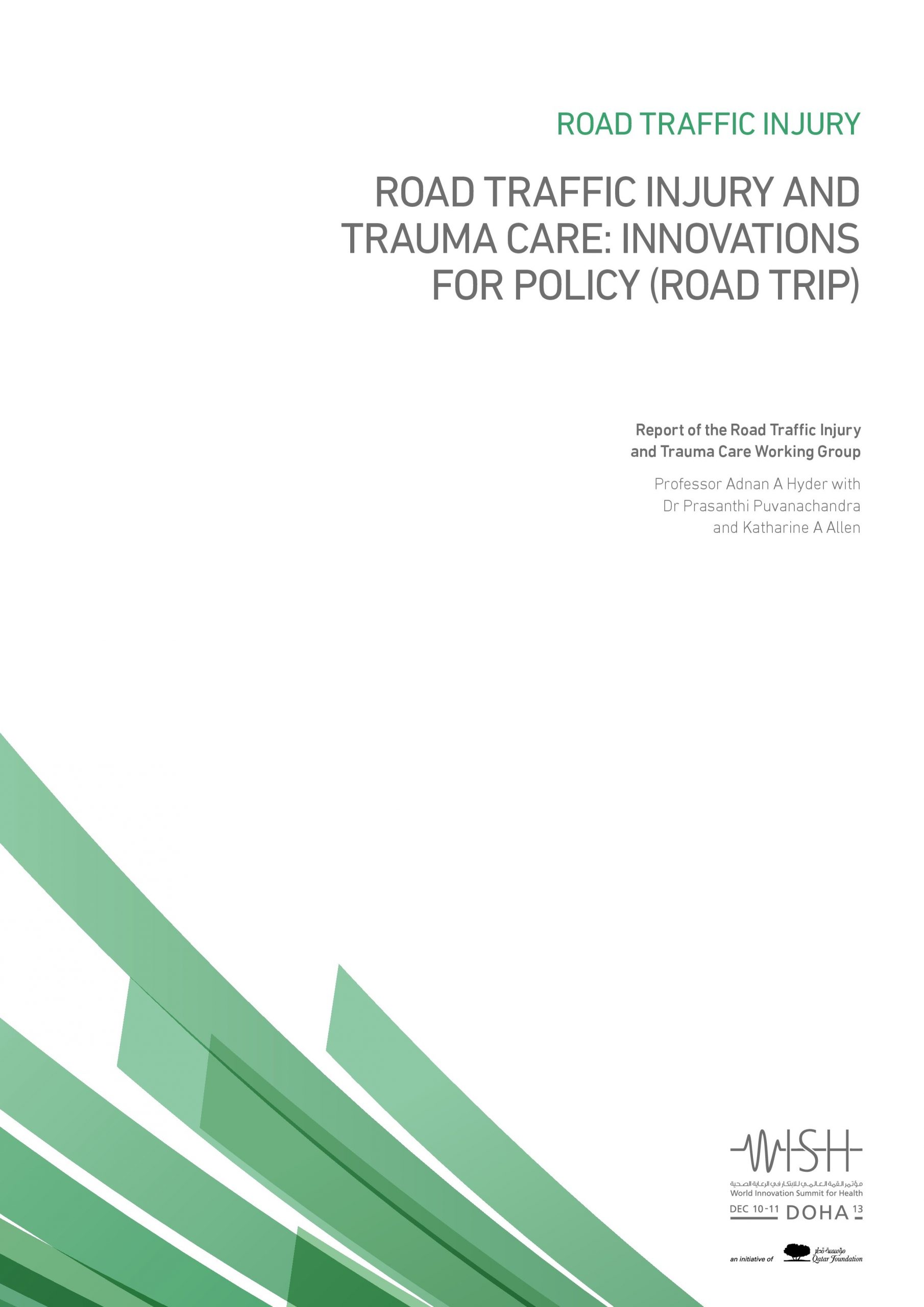Executive Summary
Road traffic injuries (RTIs) are the eighth leading cause of death globally, and the leading cause of death for young people aged 15-29. The global cost of dealing with the consequences of these crashes – including trauma care – runs into billions of dollars.1 While much has been done, the reality remains that over a million people die each yearfrom road traffic crashes, while many more are injured. This unacceptable situation represents a major call to action forthe global health community
The overall goal of this report is to identify the best available evidence, good practices, and promising innovations that are emerging around the world on RTI prevention and trauma care, and to synthesize this knowledge into practical policy recommendations for decision-makers. We propose a unique analytical framework to assess the current spectrum of available innovations to address RTIs and trauma care, and to contextualize the work that needs to be undertaken to move the field forward.
In identifying the relevant key innovations, by highlighting best practices and presenting a range of case studies from around the world, this report takes a global and multi-sectoral perspective, with sensitivity to those regions of the world that face specific social, economic, and financial challenges. The intent is not only to be concise and practical but also to be bold and provocative, especially in those areas requiring immediate action or urgentre-tooling of approaches.
It is clear that the field of RTI prevention and trauma care is ripe for a breakthrough. Such a change is needed not only to drive, but also to sustain the development of innovations that can successfully reduce the heavy burden of RTIs and road deaths. We believe that all stakeholders in road safety and trauma care across health and allied sectors have a key role to play in developing and diffusing innovative solutions and supporting their effective implementation. This report concludes by putting forward ten recommendations that we hope will be taken up by decision-makers.

